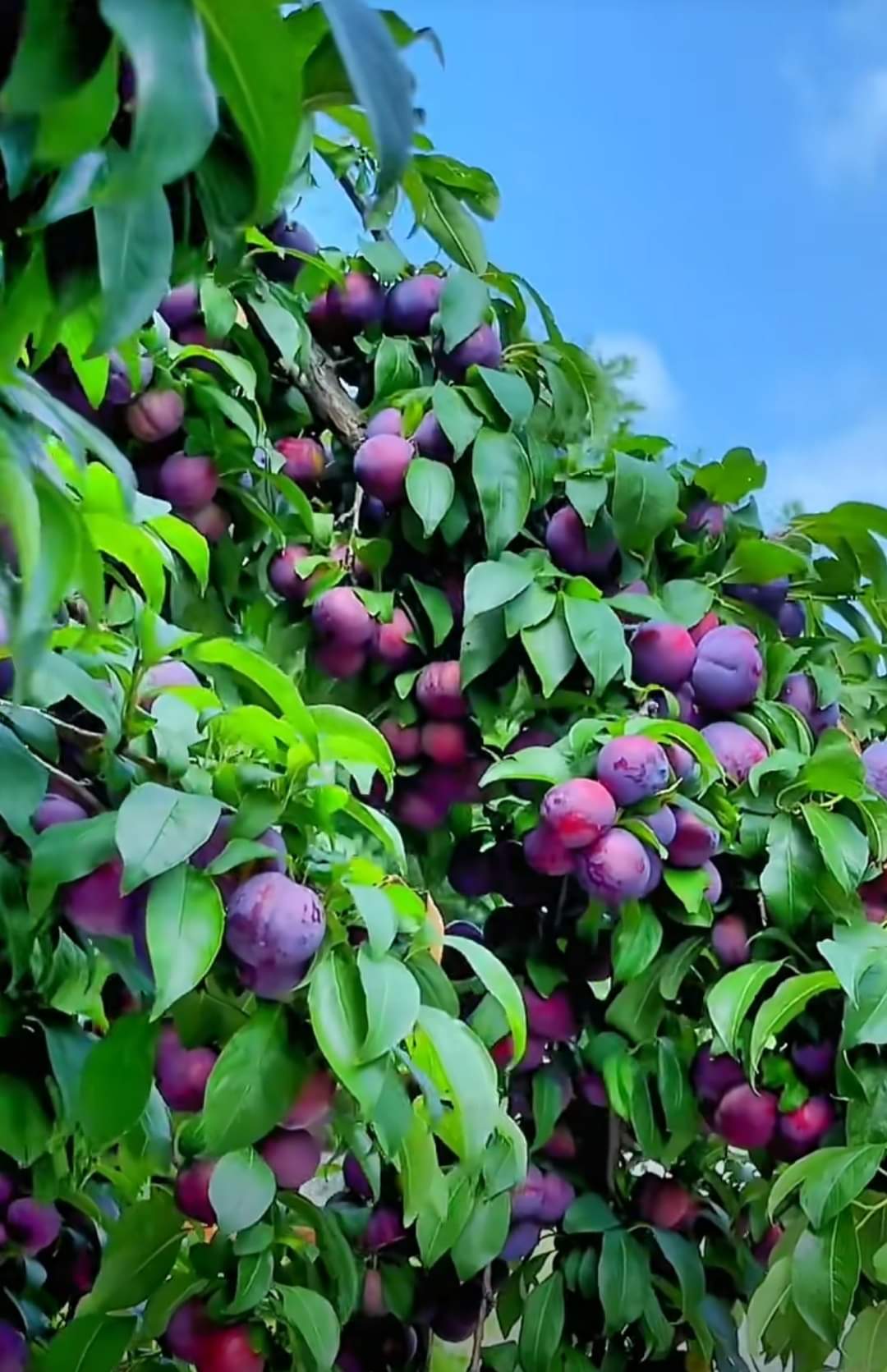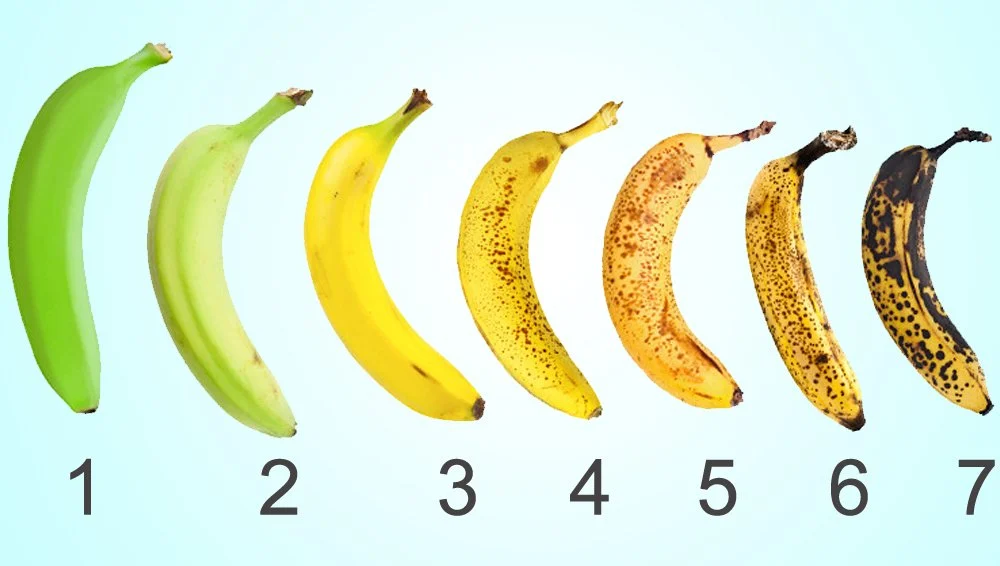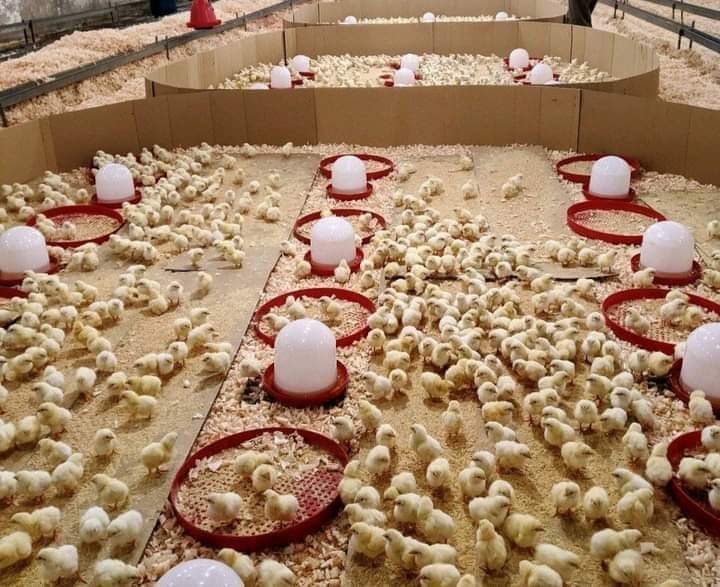A COMPREHENSIVE GUIDE ON HOW TO GROW PLUMS
Plums are a delicious stone fruits that come in a variety of colors, including red, purple, yellow, and green depending on the cultivar. Plums have a sweet and juicy flesh surrounding a single large seed. They are not only taste but also have a nutritious, as they are a good source of vitamins C, vitamin K, potassium, minerals and dietary fiber.
PLUMS HEALTH BENEFITS
1. Plums are rich in antioxidants : Plums are packed with antioxidants which help neutralize harmful free radicals in the body. These antioxidants can help reduce inflammation, lower risk of chronic diseases and protect cells
from oxidative damage.
2. They help improve digestive health: plums are highly rich in dietary fiber, which is important in maintaining digestive health. Fiber prevents constipation, promotes regular bowel movements and supports a healthy gut microbiome.
3. Improves bone health: Plums contain vitamin K, which plays a big role in bone health by supporting calcium absorption and bone mineralization. Adequate supply of vitamin K help reduce the risk of osteoporosis and
fractures.
4. Plums aid in heart health: The potassium content in plums helps regulate blood pressure and maintain proper heart function. Potassium helps counteract the effects of sodium, which can contribute to high blood pressure.
5. Plums help in weight management: Because of their high fiber content and relatively low calorie count, plums can be a satisfying and nutritious snack for individuals looking to manage their weight. Fiber helps promote feelings
of fullness, reducing overall calorie intake and aiding in weight loss or maintenance.
6. Improved immune function: plums contain vitamin C, which is known for its role in supporting the immune system. Adequate vitamin C intake may help reduce the duration and severity of common colds and infections.
ECOLOGICAL REQUIREMENTS FOR GROWING PLUMS
1. Climate: Plums thrive in temperate climates with distinct seasons. They require a certain number of chilling hours (exposure to cold temperatures) during the dormant period to break dormancy and set fruit properly. Different plum varieties different chilling requirements, typically ranging from 200 to 1,500 hours below 45°F (7°C). Additionally, plums prefer regions with warm summers and relatively mild winters.
2. Sunlight: Plums require full sun exposure to thrive and produce abundant fruit. They should be planted in a location that receives at least 6 to 8 hours of direct sunlight per day.
3. Soil: Plums grow best in well-drained, fertile soil with a pH range of 6.0 to 7.0. Sandy loam or loamy soil types are ideal. Avoid heavy clay soils that can retain too much water and lead to root rot.
4. Moisture: While plums prefer well-drained soil, they also require consistent moisture, especially during the growing season and fruit development. Adequate irrigation is essential, particularly during dry periods, to ensure proper growth and fruit production. However, plums are susceptible to root rot if they are subjected to waterlogged conditions for extended periods.
5. Pollination: Most plum varieties are self-pollinating, but cross-pollination with another plum tree of a different cultivar can increase fruit yield and quality. Bees and other pollinators are essential for transferring pollen between plum trees. Planting multiple plum trees or different varieties nearby can enhance pollination and fruit set.
6. Spacing: When planting plum trees, adequate spacing is crucial to allow for proper air circulation, sunlight penetration, and root development. Space plum trees at least 15 to 20 feet apart, depending on the specific cultivar and rootstock.
7. Protection from Frost: Late spring frosts can damage plum blossoms and reduce fruit yield. Choose planting sites with good air drainage to minimize the risk of frost damage. In regions prone to late frosts, consider planting plum trees on slopes or in elevated locations where cold air can drain away.
PESTS AND DISEASES AFFECTING PLUMS AND THEIR CONTROL MEASURES
PESTS
Here is a list of common pests affecting plums, their sign of infestation, and their control measures:
1. Plum curculio
Sign: crescent-shaped scars on fruit where the adult beetle has laid eggs.
Control measures:
. Apply insecticides targeted at the adult beetles during bloom and early fruit set.
. Remove and destroy fallen fruit to reduce overwintering sites.
. Use pheromone traps to monitor and reduce adult populations.
2. Aphids
Signs: Sticky honeydew residue on leaves, distorted or curled leaves, and the presence of ants farming aphids.
Control measures
.Introduce natural predators such as ladybugs, lacewings, or parasitic wasps.
.Use insecticidal soaps, neem oil, or horticultural oils to control aphid populations.
.Prune heavily infested parts of the tree and dispose of them properly.
3. Plum moth
Signs:
The most obvious one is catching the plum- eating caterpillars in act. They are pale pink with a brown head, and are often just over 1cm in size. But they also leave behind a tell-tale trail of black crumbly waste around the stone.
Control measures
. Apply insecticides at the early stage of plant growth.
. Practice good orchard sanitation by removing and destroying infested fruit.
.Trap the adult moths before they moth using fly traps. Eliminate places for the larvae to overwinter by clearing away debris and loose bark from the base of the plum trees.
4. Plum sawfly
Control measures
. Handpick and destroy sawfly larvae when they are visible.
. Use row covers to prevent adult sawflies from laying eggs on fruit.
. Apply insecticides during the early stages of infestation.
5. Plum lefthoppers
Signs: Yellowing and curling of leaves and overall reduced tree vigor.
Control measures
. Apply insecticides if leafhopper populations reach damaging levels.
. Maintain good orchard hygiene to reduce overwintering sites.
. introduce natural predators like lacewings and ladybugs.
6. Plum scale
Signs: Small, raised bumps or scale on twigs and branches.
Control measures
. Introduce natural predators like predatory beetles and parasitic wasps.
. Apply horticultural oils or insecticidal soaps to suffocate scale insects.
. Prune heavily infested branches and dispose of them properly.
7. Plum borers
Signs: Entry holes with frass near the base of the tree or on branches.
Control measures
. Prune and destroy infested branches to remove borers.
. Apply insecticides during the appropriate stage of borer development.
. Use sticky traps to monitor adult borer activity.
DISEASES
1. Brown Rot
Signs: Brown, mushy lesions on fruit, often with grayish-brown spore masses;
blossom blight with brown, wilted blossoms.
Control measures
. Apply fungicides during bloom and fruit development stages.
. Remove and destroy infected fruit to prevent the spread of the disease.
. Practice good orchard sanitation by removing mummified fruit and pruning
infected branches.
2. Bacterial canker
Signs: Sunken cankers with oozing sap on branches; dieback of branches; bacterial
ooze may be present in wet conditions.
Control measures
. Prune and remove infected branches during dry weather to prevent further spread.
. Apply copper-based fungicides during the dormant season.
. Practice good sanitation by removing and disposing of infected plant material.
3. Plum pox
Signs: Yellow or red ringspots on leaves; fruit deformities such as ringspots, vein-
clearing, and necrotic rings.
Control measures
. Use virus-free planting material to prevent the introduction of the disease.
. Remove and destroy infected trees to prevent the spread of the virus.
. Monitor orchards regularly for symptoms of the disease.
4. Powdery mildew
Signs: White powdery growth on leaves, shoots, and fruit; leaves may become distorted or curl.
Control measures
. Apply fungicides preventively during periods of high humidity and mild temperatures.
. Maintain good air circulation around trees by proper pruning and spacing.
. Plant resistant cultivars when available.
5. Leaf curl
Signs: Distorted, curled leaves with red or purple discoloration; severe infections can lead to leaf drop.
Control measures
. Apply fungicides during the dormant season to protect against infection.
. Prune and remove infected branches to reduce disease pressure.
. Maintain good orchard hygiene by removing fallen leaves and debris.
6. Cytospora canker
Sings: Sunken cankers with resinous gum on branches; dieback of branches; small, black fungal fruiting bodies may be present.
Control measures
. Prune and remove infected branches during dry weather.
. Avoid stress factors such as drought or mechanical injury.
. Apply fungicides preventively during the dormant season.





